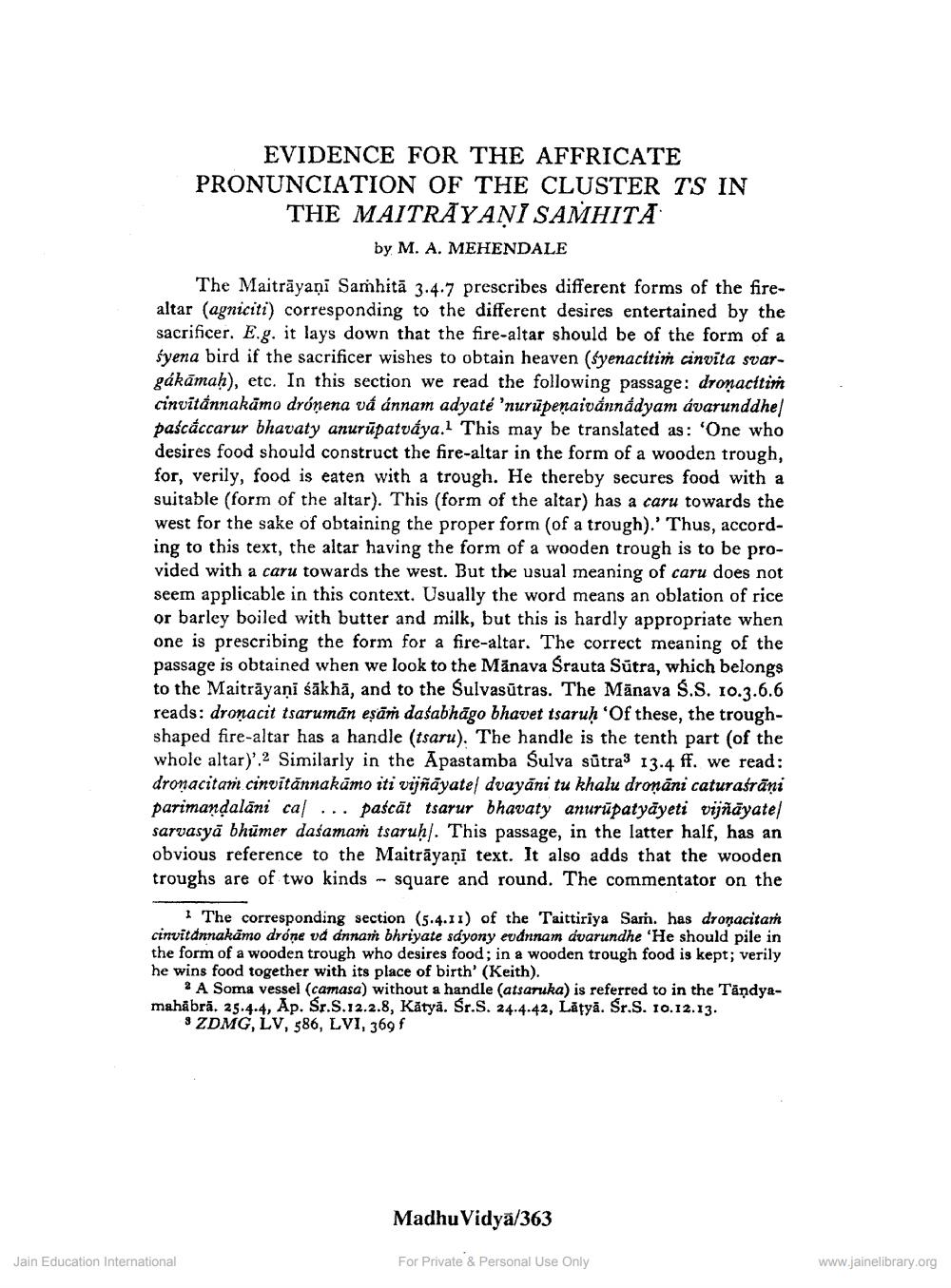________________
EVIDENCE FOR THE AFFRICATE PRONUNCIATION OF THE CLUSTER TS IN THE MAITRĀYANI SAMHITA
by M. A. MEHENDALE The Maitrāyaṇi Samhitā 3.4.7 prescribes different forms of the firealtar (agniciti) corresponding to the different desires entertained by the sacrificer. E.g. it lays down that the fire-altar should be of the form of a śyena bird if the sacrificer wishes to obtain heaven (syenacitim cinvita svargákāmah), etc. In this section we read the following passage: dronacitim cinvitánnakāmo drónena va ánnam adyaté 'nurūpenaivánnádyam ávarunddhe/ paścáccarur bhavaty anurūpatváya.? This may be translated as: 'One who desires food should construct the fire-altar in the form of a wooden trough, for, verily, food is eaten with a trough. He thereby secures food with a suitable (form of the altar). This (form of the altar) has a caru towards the west for the sake of obtaining the proper form of a trough).' Thus, according to this text, the altar having the form of a wooden trough is to be provided with a caru towards the west. But the usual meaning of caru does not seem applicable in this context. Usually the word means an oblation of rice or barley boiled with butter and milk, but this is hardly appropriate when one is prescribing the form for a fire-altar. The correct meaning of the passage is obtained when we look to the Mänava Srauta Sutra, which belongs to the Maiträyani sākhā, and to the Sulvasūtras. The Mänava S.S. 10.3.6.6 reads: dronacit tsarumān eşāṁ daśabhāgo bhavet tsaruḥ 'Of these, the troughshaped fire-altar has a handle (tsaru). The handle is the tenth part of the whole altar)'.2 Similarly in the Apastamba Sulva sutra3 13.4 ff. we read: dronacitan cinvitānnakāmo iti vijñāyate| dvayāni tu khalu droņāni caturafrāni parimandalāni cal ... paścāt tsarur bhavaty anurūpatyāyeti vijñāyate sarvasyā bhūmer daśamam tsaruḥ). This passage, in the latter half, has an obvious reference to the Maitrāyaṇi text. It also adds that the wooden troughs are of two kinds - square and round. The commentator on the
1 The corresponding section (5.4.11) of the Taittiriya Sarn. has dronacitar cinvitannakāmo drone vd annam bhriyate sdyony euánnam dvarundhe 'He should pile in the form of a wooden trough who desires food; in a wooden trough food is kept; verily he wins food together with its place of birth' (Keith).
2 A Soma vessel (camasa) without a handle (atsaruka) is referred to in the Tändyamahābrā. 25.4.4, Ap. Sr.S.12.2.8, Katya. Śr.S. 24.4.42, Látyā. Sr.S. 10.12.13.
9 ZDMG, LV, 586, LVI, 369 f
Madhu Vidyā/363
Jain Education International
For Private & Personal Use Only
www.jainelibrary.org




